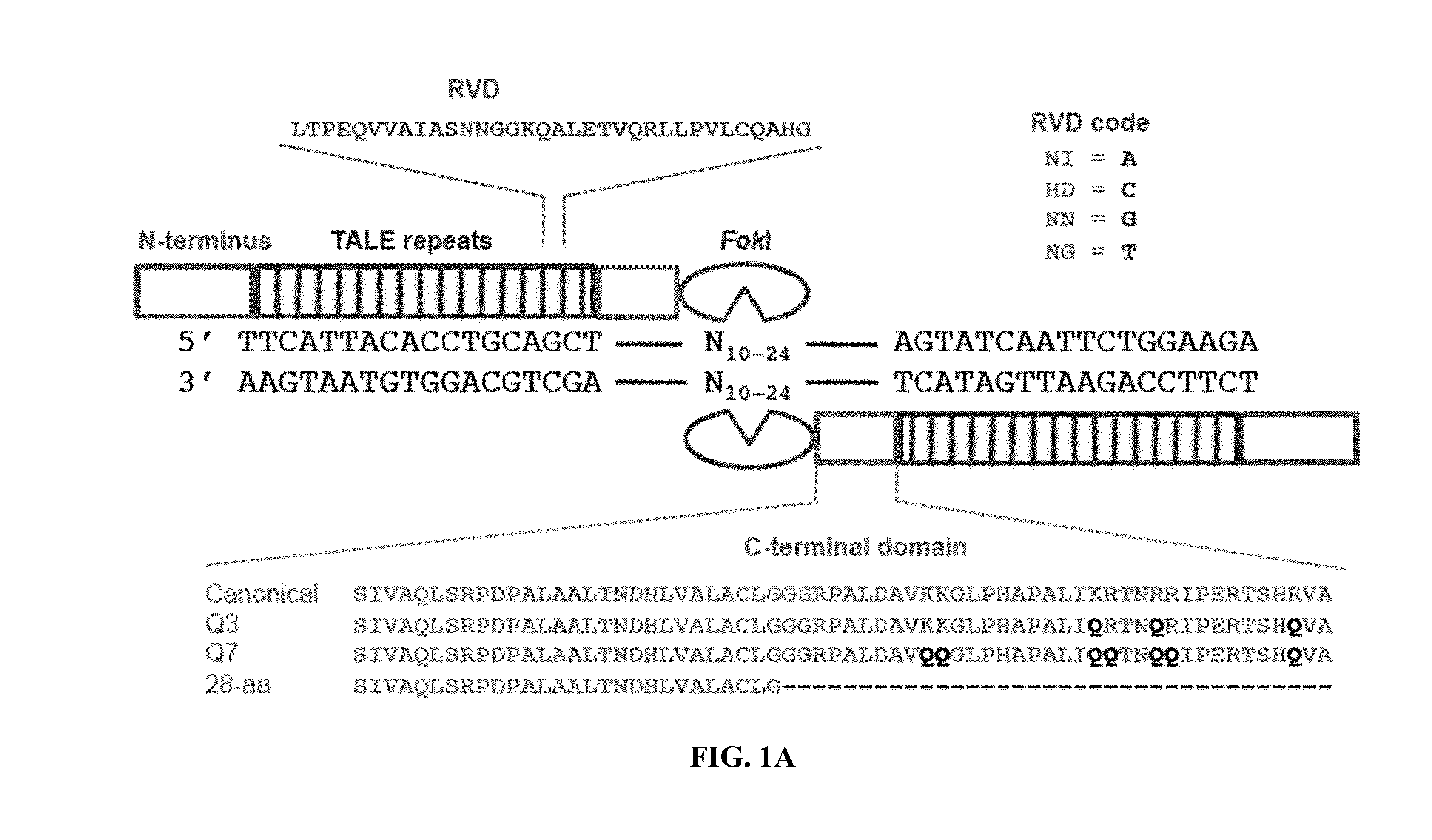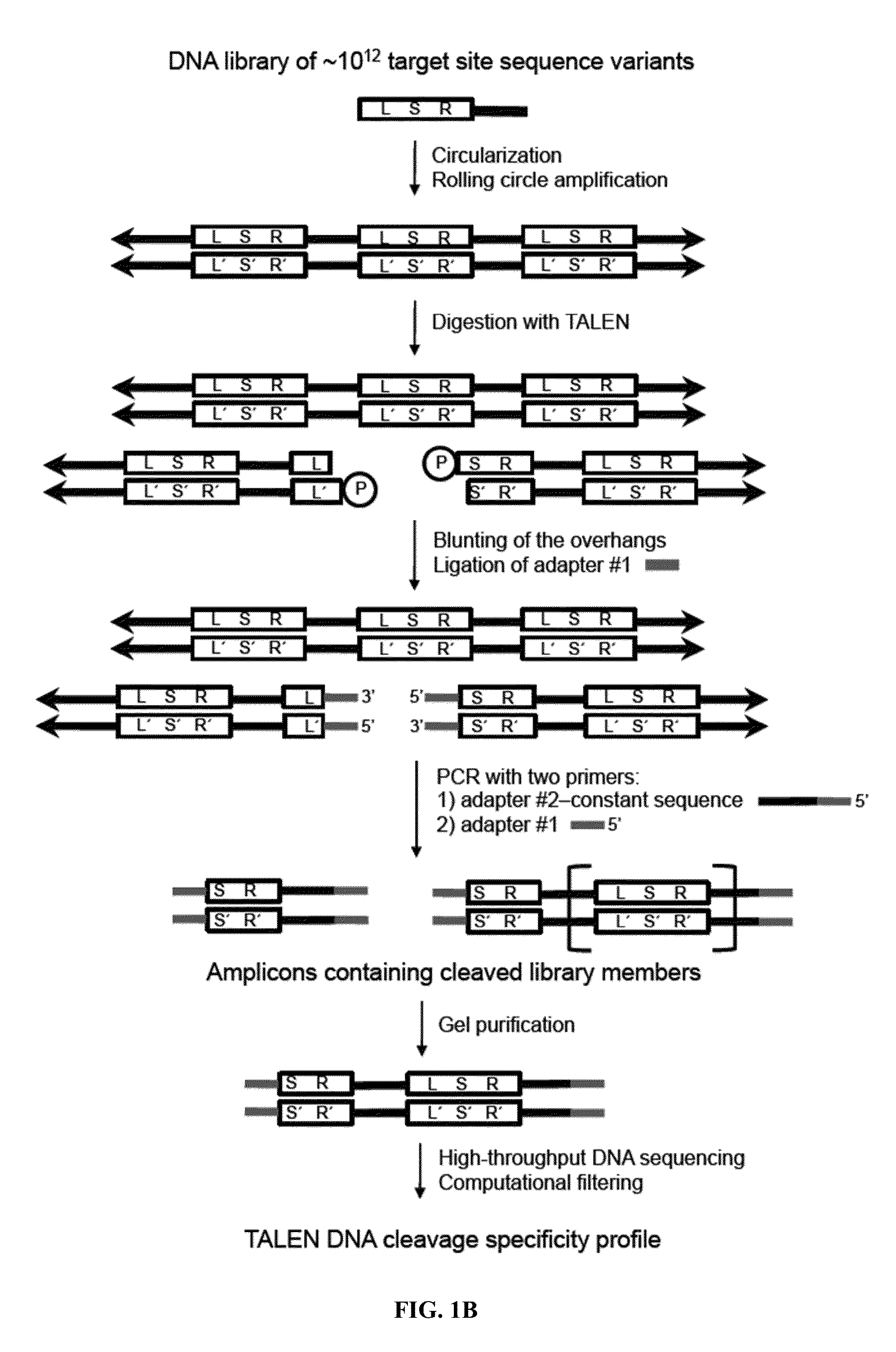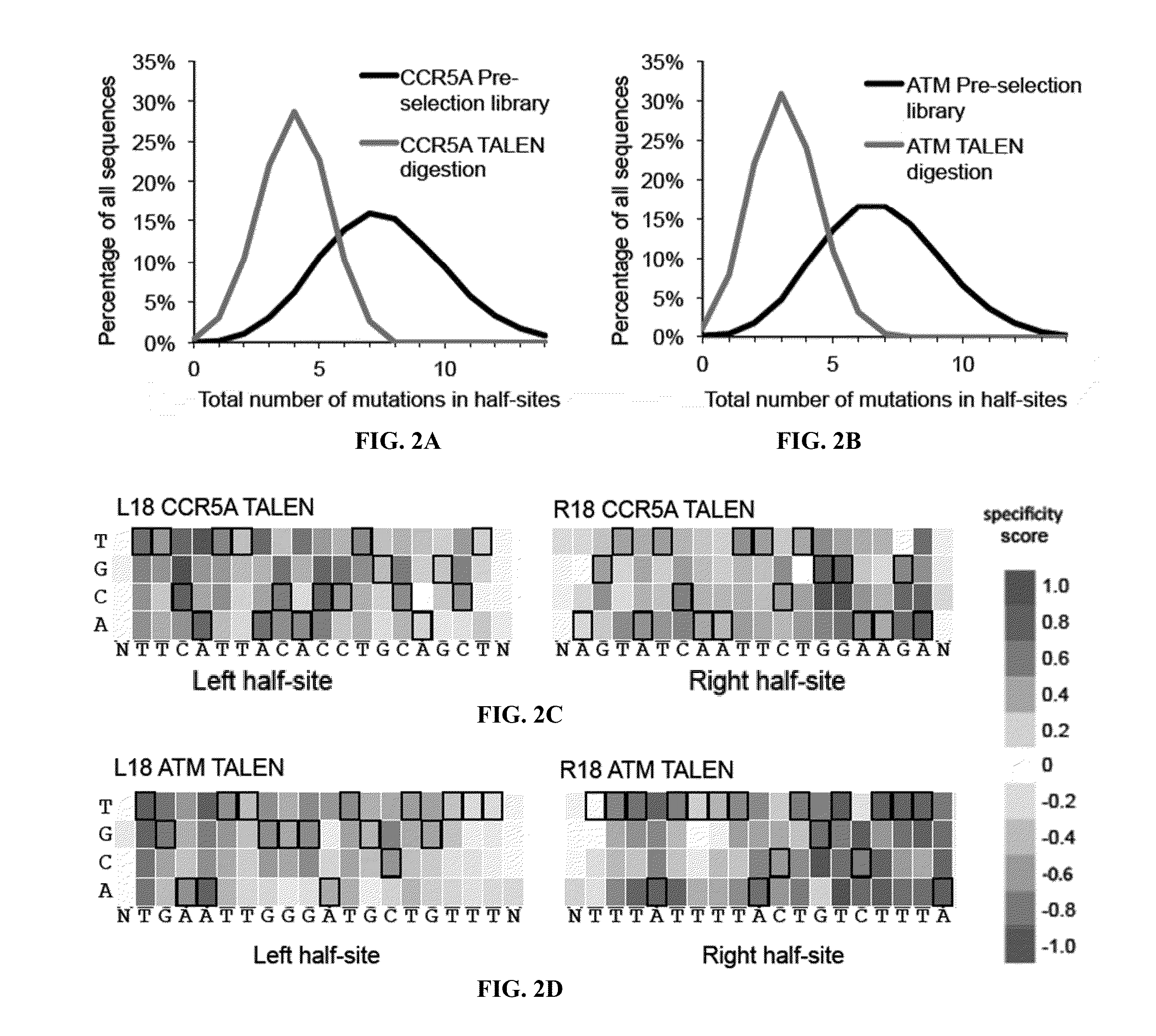Engineered transcription activator-like effector (TALE) domains and uses thereof
a transcription activator and domain technology, applied in the field of engineered transcription activatorlike effector (tale) domains, can solve the problems of not being able to study the depth of talens' ability to distinguish target sequences from closely related off-target sequences, and achieve the effects of minimal off-target activity, reduced non-specific or off-target dna binding, and increased on-target cleavage efficiency
- Summary
- Abstract
- Description
- Claims
- Application Information
AI Technical Summary
Benefits of technology
Problems solved by technology
Method used
Image
Examples
example 1
Materials and Methods
Oligonucleotides, PCR and DNA Purification
[0114]All oligonucleotides were purchased from Integrated DNA Technologies (IDT). Oligonucleotide sequences are listed in Table 10. PCR was performed with 0.4 μL of 2 U / μL Phusion Hot Start II DNA polymerase (Thermo-Fisher) in 50 μL with 1×HF Buffer, 0.2 mM dNTP mix (0.2 mM dATP, 0.2 mM dCTP, 0.2 mM dGTP, 0.2 mM dTTP) (NEB), 0.5 μM to 1 μM of each primer and a program of: 98° C., 1 min; 35 cycles of [98° C., 15 s; 62° C., 15 s; 72° C., 1 min] unless otherwise noted. Many DNA reactions were purified with a QIAquick PCR Purification Kit (Qiagen) referred to below as Q-column purification or MinElute PCR Purification Kit (Qiagen) referred to below as M-column purification.
TALEN Construction
[0115]The canonical TALEN plasmids were constructed by the FLASH method12 with each TALEN targeting 10-18 base pairs. N-terminal mutations were cloned by PCR with Q5 Hot Start Master Mix (NEB) [98° C., 22 s; 62° C., 15 s; 72° C., 7 min]) ...
example 2
[0185]A number of TALENs were generated in which at least one cationic amino acid residue of the canonical N-terminal domain sequence was replaced with an amino acid residue that exhibits no charge or a negative charge at physiological pH. The TALENs comprised substitutions of glycine (G) and / or glutamine (Q) in their N-terminal domains (see FIG. 18). An evaluation of the cutting preferences of the engineered TALENs demonstrated that mutations to glycine (G) are equivalent to glutamine (Q). Mutating the positively charged amino acids in the TALEN N-terminal domain (K150Q, K153Q, and R154Q) result in similar decreases in binding affinity and off-target cleavage for mutations to either Q or G. For example, TALENs comprising the M3 and M4 N-terminus, which comprises the same amino acid (R154) mutated to either Q or G, respectively, demonstrated roughly equivalent amounts of cleavage. Similarly TALENs comprising the M6 and M8 N-terminus, varying only in whether Q or G substitutions were...
example 3
[0186]A plasmid was generated for cloning and expression of engineered TALENs as provided herein. A map of the plasmid is shown in FIG. 19. The plasmid allows for the modular cloning of N-terminal and C-terminal domains, e.g., engineered domains as provided herein, and for TALE repeats, thus generating a recombinant nucleic acid encoding the desired engineered TALEN. The plasmid also encodes amino acid tags, e.g., an N-terminal FLAG tag and a C-terminal V5 tag, which can, optionally be utilized for purification or detection of the encoded TALEN. Use of these tags is optional and one of skill in the art will understand that the TALEN-encoding sequences will have to be cloned in-frame with the tag-encoding sequences in order to result in a tagged TALEN protein being encoded.
[0187]An exemplary sequence of a cloning vector as illustrated in FIG. 19 is provided below. Those of skill in the art will understand that the sequence below is illustrative of an exemplary embodiment and does not...
PUM
| Property | Measurement | Unit |
|---|---|---|
| temperature | aaaaa | aaaaa |
| volume | aaaaa | aaaaa |
| pH | aaaaa | aaaaa |
Abstract
Description
Claims
Application Information
 Login to View More
Login to View More - R&D
- Intellectual Property
- Life Sciences
- Materials
- Tech Scout
- Unparalleled Data Quality
- Higher Quality Content
- 60% Fewer Hallucinations
Browse by: Latest US Patents, China's latest patents, Technical Efficacy Thesaurus, Application Domain, Technology Topic, Popular Technical Reports.
© 2025 PatSnap. All rights reserved.Legal|Privacy policy|Modern Slavery Act Transparency Statement|Sitemap|About US| Contact US: help@patsnap.com



